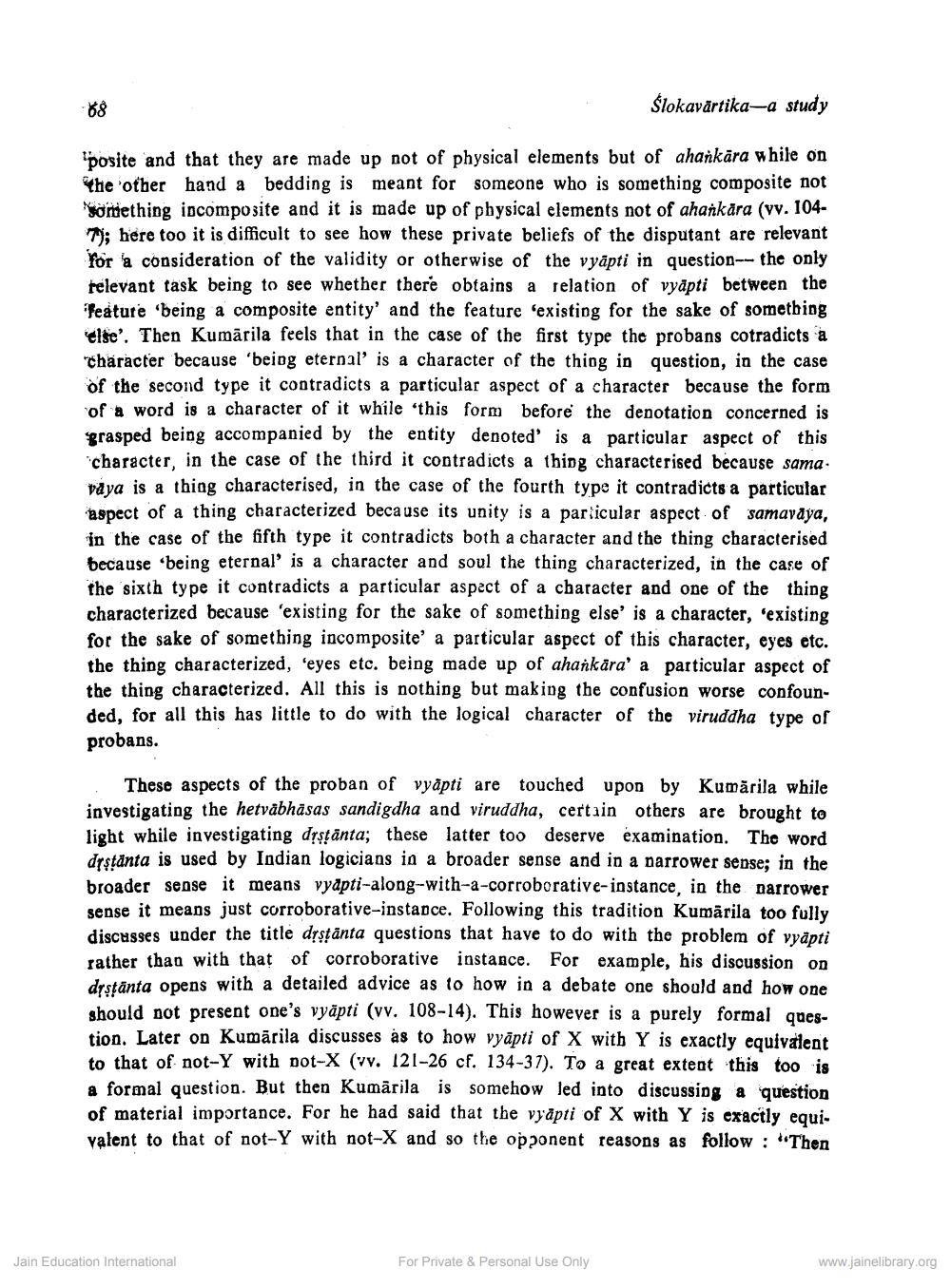________________
88
Ślokavārtika—a study
'posite and that they are made up not of physical elements but of ahankara while on The other hand a bedding is meant for someone who is something composite not Sortiething incomposite and it is made up of physical elements not of ahankära (vv. 104Ty; here too it is difficult to see how these private beliefs of the disputant are relevant For la consideration of the validity or otherwise of the vyāpti in question-- the only relevant task being to see whether there obtains a relation of vyāpti between the feature being a composite entity' and the feature Sexisting for the sake of something else'. Then Kumārila feels that in the case of the first type the probans cotradicts a character because 'being eternal' is a character of the thing in question, in the case of the second type it contradicts a particular aspect of a character because the form of a word is a character of it while this form before the denotation concerned is Serasped being accompanied by the entity denoted' is a particular aspect of this character, in the case of the third it contradicts a thing characterised because sama. váva is a thing characterised, in the case of the fourth type it contradicts a particular taspect of a thing characterized because its unity is a particular aspect of samavaya, in the case of the fifth type it contradicts both a character and the thing characterised because being eternal' is a character and soul the thing characterized, in the case of the sixth type it contradicts a particular aspect of a character and one of the thing characterized because 'existing for the sake of something else' is a character, 'existing for the sake of something incomposite' a particular aspect of this character, eyes etc. the thing characterized, 'eyes etc. being made up of ahankara' a particular aspect of the thing characterized. All this is nothing but making the confusion worse confounded, for all this has little to do with the logical character of the viruddha type of probans.
. These aspects of the proban of vyāpti are touched upon by Kumărila while investigating the hetväbhāsas sandigdha and viruddha, certain others are brought to light while investigating dịştānta; these latter too deserve examination. The word drstanta is used by Indian logicians in a broader sense and in a narrower sense; in the broader sense it means vyapti-along-with-a-corroborative-instance, in the narrower sense it means just corroborative-instance. Following this tradition Kumārila too fully discusses under the title drstānta questions that have to do with the problem of vyāpti Father than with that of corroborative instance. For example, his discussion on dostanta opens with a detailed advice as to how in a debate one should and how one should not present one's vyāpti (vv. 108-14). This however is a purely formal question. Later on Kumārila discusses as to how vyāpti of X with Y is exactly equivalent to that of not-Y with pot-X (vv. 121-26 cf. 134-37). To a great extent this too is a formal question. But then Kumärila is somehow led into discussing a question of material importance. For he had said that the vyāpti of X with Y is exactly equivalent to that of not-Y with not-X and so the opponent reasons as follow : "Then
Jain Education International
For Private & Personal Use Only
www.jainelibrary.org




